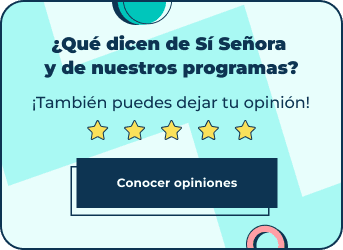Nearly five years after the onset of the Covid-19 pandemic, its historical significance remains undeniable. For instance, virtual education continues to thrive even in 2024. While online learning existed long before the pandemic, its popularity surged during that time. In fact, Coursera reported 20 million new users in 2021, demonstrating a remarkable rise in student enrollment.
This educational shift forced many to transition from spending hours in a physical classroom to attending web-based conferences. Naturally, this brought about new challenges.
One of the biggest hurdles in virtual education is ensuring that everyone has access to quality learning opportunities—and not just starting a course but successfully completing it. To address these needs, different learning modalities have emerged, including synchronous and asynchronous education.
Understanding the features and benefits of each approach is key to making an informed decision when choosing a course, bootcamp, workshop, or other learning program. Here’s everything you need to know.
What is synchronous education?
Synchronous education refers to real-time teaching, where students learn and interact live with their instructor and peers. The entire group learns simultaneously, which means students must be present during the class session.
This type of learning can take place in a physical setting, such as a classroom, or in a virtual environment, like a webinar or video conference. It often includes group activities such as discussions or presentations.
The key advantages of synchronous education include the ability to get questions answered in real-time, fostering direct interaction between students and instructors, and offering a structured experience that closely resembles a traditional in-person classroom setting.
What is asynchronous education?
Asynchronous education offers a completely different approach to learning, as it doesn’t require students to be present at the same time. Instead, educational content is made available for individuals to learn at their own pace.
This method often relies on tools such as pre-recorded videos, readings, discussion forums, or podcasts provided by the instructor.
Asynchronous education offers significant advantages, including complete flexibility to study anytime and anywhere, the ability to learn at a personalized pace, and convenient access to downloadable materials for ongoing review and reference.
Differences between synchronous and asynchronous education
While virtual education initially began with an asynchronous model, advancements in technology and improved communication tools have made synchronous virtual classes possible. However, there are key differences between the two approaches:
- Interaction: Synchronous education offers direct, real-time interaction, while asynchronous education typically involves limited engagement with other students or the instructor.
- Schedule flexibility: Asynchronous learning allows complete flexibility, enabling individuals to learn at their own pace and on their own schedule. In contrast, synchronous learning requires participants to be available at a specific time.
- Platforms: Synchronous education relies on tools like Zoom, Microsoft Teams, or Google Meet, whereas asynchronous education often uses e-learning platforms such as Moodle or Blackboard.
Applying synchronous and asynchronous education in digital marketing
Both types of learning are well-suited for training in digital marketing, but it’s essential to choose the educational model that aligns with your current needs.
Synchronous education in digital marketing enables marketing teams or students to interact in real time with peers and instructors, sparking idea development and immediate resolution of questions.
Collaboration is crucial in digital marketing, and the real-time interaction provided by synchronous learning supports brainstorming sessions and group discussions, boosting collective creativity.
This approach is particularly effective for training sales teams, as online sessions can be used to provide communication guidelines, offer feedback, and discuss strategies that enhance the execution of campaigns.
Another way to apply synchronous education in digital marketing is through webinars that train participants on new tools or processes. These sessions take advantage of immediate connectivity, allowing for real-time clarification of questions.
When it comes to asynchronous education in digital marketing, its flexibility stands out, enabling marketing teams to access educational materials on their own schedules. Additionally, having lifetime access to the materials allows teams to revisit and dive deeper into the content whenever needed.
This learning model is ideal for training brand ambassadors or influencers. For example, an asynchronous course can be designed to focus on brand values, style guides, and best practices. Participants can then review this material as needed to ensure their content aligns with the brand’s message.
Asynchronous education in digital marketing is also well-suited for ongoing employee training. Pre-recorded courses allow team members to update their skills at their own pace, ensuring they stay current with industry trends and tools.Now that you understand the features and differences of these two types of learning, you can confidently choose a course or training program that aligns with your needs and helps you achieve your goals more effectively.







